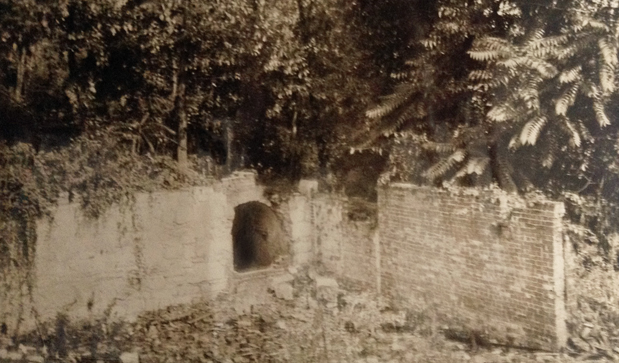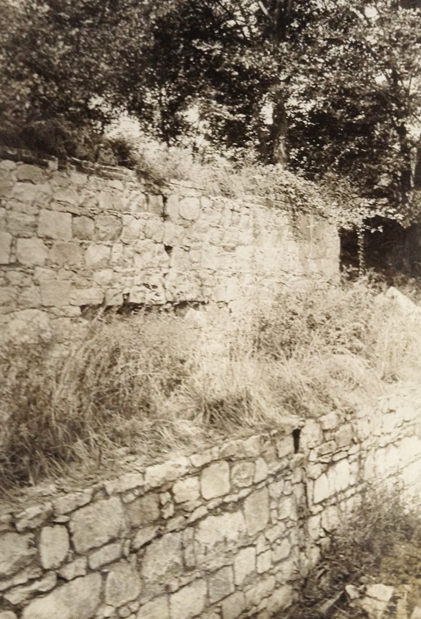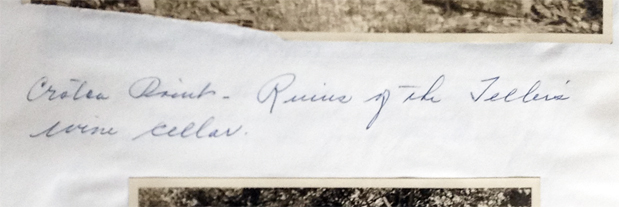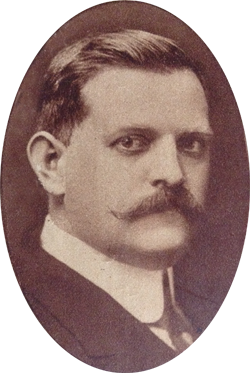

Used by permission of the Tarrytown Historical Society.

attributes the wine cellars to the Teller family.
These undated photographs—probably taken in the 1920s or 1930s—show portions of what was then the ruins of the Underhill wine cellars on Croton Point. They were made by Leslie V. Case, who was superintendent of the Tarrytown Schools for more than 30 years. The photographs are glued to the pages of one of Case’s scrapbooks, now in the collection of the Tarrytown Historical Society, which has graciously given us permission to share them.

from a newspaper clipping in the files of the Tarrytown Historical Society. Used by permission.
Mr. Case was not your average school superintendent. Among other things he was an amateur archeologist and geologist, who collected ancient Egyptian artifacts, gemstones, and Native American artifacts—some of which he dug up himself in his capacity as the chairman of the Westchester Historical Society’s Committee on Indian Remains. His historic 1848 house on Grove Street, in Tarrytown, eventually became the home of the Tarrytown Historical Society.1
For more information on the Underhill vineyards, see these previous posts:
- The Grape King of Croton Point, features two color prints of the grapes that made Richard T. Underhill famous.
- You Need Not go to the Rhine to See Vineyards, is an 1859 account of a trip to Croton Point, which gives us tantalizing details about the scope of Underhill’s business.
- The Underhill Vineyards, 1867 has details from a full-page wood engraving of the Underhill vineyards, published in Harper’s Weekly in October 1867.
- R. T. Underhill—Doctor, Winemaker, and Investor in the First New York City Elevated Railway, which uncovered Richard T. Underhill’s involvement in the West Side and Yonkers Patent Railway Company, the company that began the New York City transportation system.
- Underhill Vineyard Trade Cards, issued after R. T. Underhill’s death in 1871, to market the inventory which had remained in the vaults “owing to the extreme temperance views entertained by some of the heirs.”2
- The house was built by Jacob Odell in 1848 as a wedding gift for his bride. Case purchased the house in 1918 and lived there until his death in 1937. His wife became the curator of the Tarrytown Historical Society and allowed portions of the house to be used by the society. In 1952 the historical society acquired the property through the generosity of John D. Rockefeller II. ↩
- From an ad in the American Church Almanac and Year Book, 1878, placed by the company which was selling the wine. “For the purpose of closing the accounts of the Executors, the entire stock of wine left by Dr. Underhill, . . . which has now become very old and mellow, has been placed for sale in the hands of Messrs. H. K. and F. B. Thurber & Co , New York, who in turn are appointing druggists as agents to supply the retail demand.” ↩